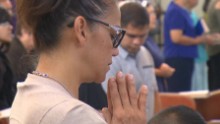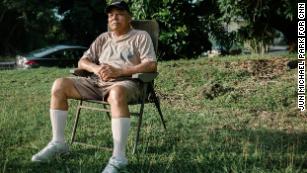Guam's faithful look to God as North Korea threat looms
Hagatña, Guam (CNN)Father Paul Gofigan began his homily with a question for the parishioners in Guam's biggest place of worship -- the Catholic Dulce Nombre de Maria Cathedral Basilica.
"If we were given 14 minutes to decide what to do with our lives, do you think you'd have enough time?"
Gofigan was referring to the length of time the Guam Homeland Security department estimates it would take a North Korean missile to reach the island. It's not idle debate.
Last week, North Korean state media said it was drawing up plans to fire four missiles less than 25 miles from Guam's coastline, placing the Pacific island in the center of the increasingly hostile rhetoric being lobbed between Washington and Pyongyang.
No-one knows how close or how far the US may be from conflict with North Korea but officials in Guam have released a two-page fact sheet on how to survive a nuclear attack.
Among the tips: don't use hair conditioner. "It will bind radioactive material to you," the sheet said.
There's no suggestion that any missiles fired from North Korea would be armed with nuclear warheads.
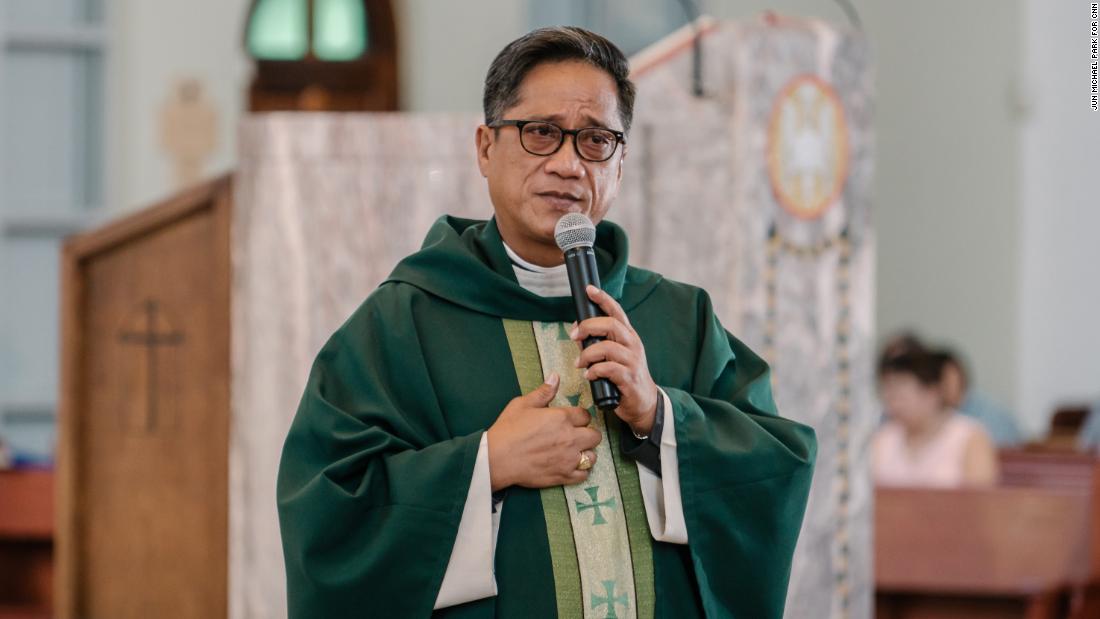
Father Paul Gofigan preaches at Sunday mass on August 13.
Guam has been US territory since 1898 and, although its residents can't vote, it's home to two important military installations -- likely targets for an adversary in any potential Pacific conflict.
Caught in North Korea's crosshairs, Guam's largely Catholic population has been turning to its faith.
Father Gofigan confesses it can be hard to find the right words for his congregation.
"It's very difficult to try to really, specially with the threat of a nuclear explosion... it's very difficult to bring that message of inner peace."
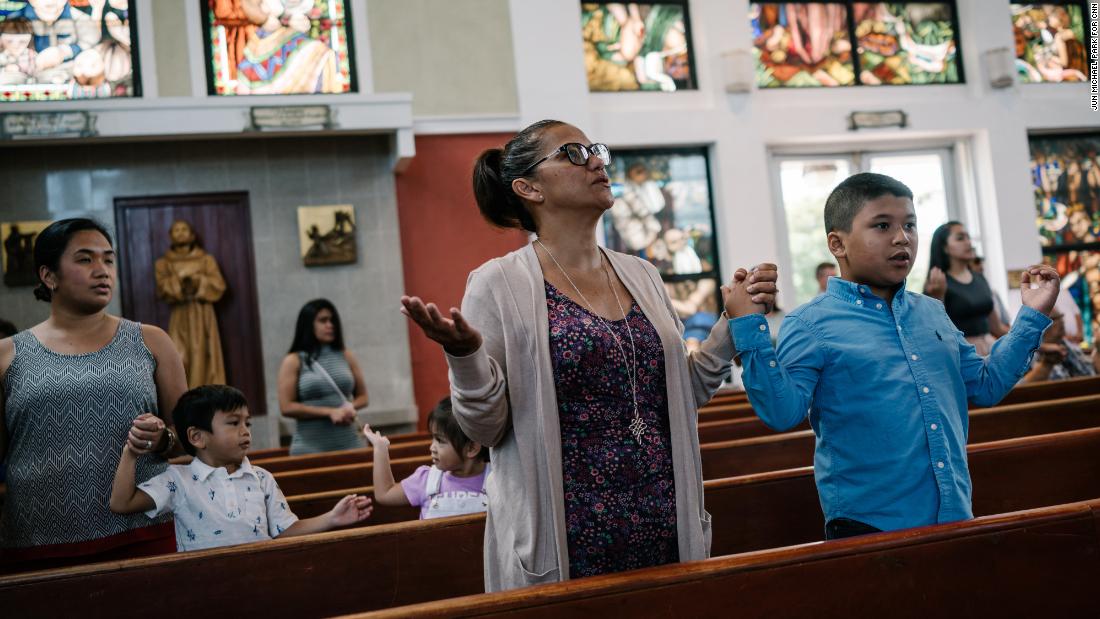
Local residents attend Sunday Mass on August 13 at Dulce Nombre de Maria Cathedral-Basilica in Hagatña, Guam.
Prayer, faith and family
Of the nearly two dozen people CNN has spoken to about the looming threat, most have taken it in stride and nearly all of them have mentioned their religion.
Their answers have centered around the idea that they can find peace through prayer, faith and family.
Some are stoic, and say what happens is in God's hands, even if they were to die. Others take a more optimistic train of thought -- it's in God's hands, so no need to worry.
"I'm sure that we all are worried but when we do trust in the Lord, we have to leave our worries up to Him," local resident Maureen Lujan said.
Domingo Santos, an 85-year-old survivor of the Japanese occupation during World War II, told CNN he asks himself what is going to happen, but falls back on his faith. "As a Catholic, I believe all I have to do is pray," he said.
Local resident Barbara Delgado told CNN she was getting her family prepared "for the what ifs."
"We have faith in our military defense -- that they will protect us and of course we have also faith in Blessed Mother and Dear Lord," she said. "They will watch over this island as they always have."
Despite the different answers, the importance of faith in Guam stands in stark contrast to North Korea -- a communist state where atheism is the official policy and foreigners have been imprisoned for years for allegedly bringing bibles into the country.
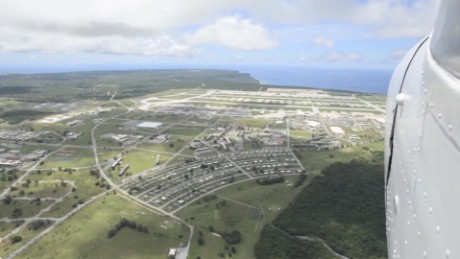
What you need to know about Guam
'Taken over by faith'
The pews in the cavernous cathedral were about a third full for Sunday mass -- about average according to Father Gofigan.
Construction on Guam's first Catholic church began in 1669, after the arrival of Spanish priests.
That building was damaged in WWII. The Dulce Nombre de Maria Cathedral Basilica stands on the same ground as its predecessor. Along with the Guam Museum, the church is one of the two most impressive structures that sit between the verdant mountains and vast ocean in the heart of the Guamanian capital of Hagataña.
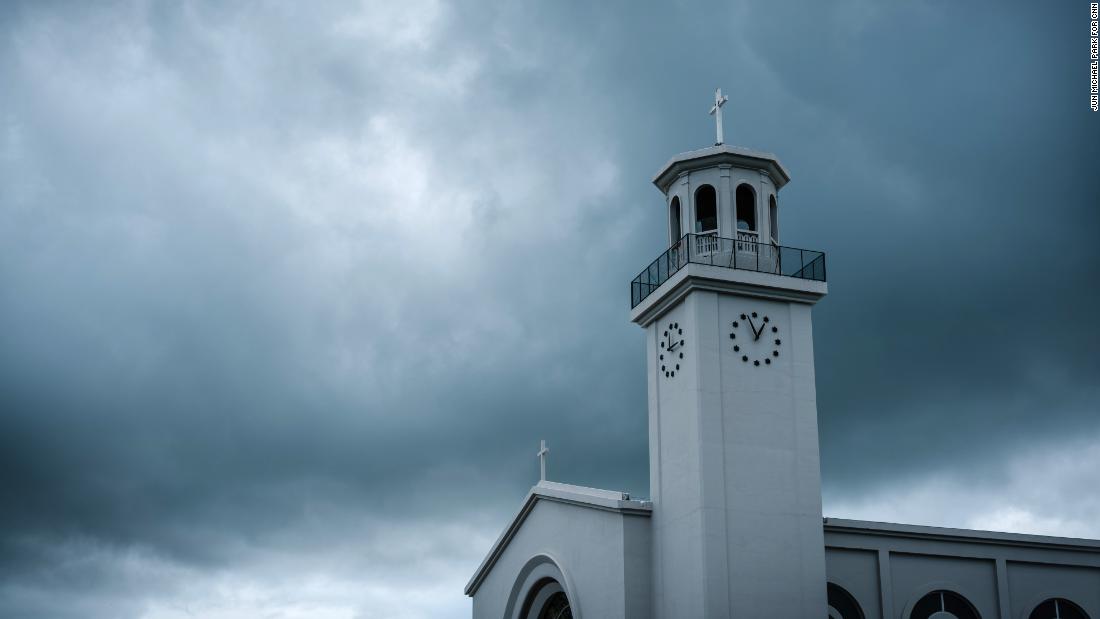
Heavy clouds hover over Dulce Nombre de Maria Cathedral-Basilica in Hagatna, Guam on August 13.
Catholicism is omnipresent in Guam. The island is 85% Roman Catholic, according to figures from the CIA World Factbook, and the island is dotted with churches, many in small villages, administered by the Archdiocese of Agana (another name for Hagataña).
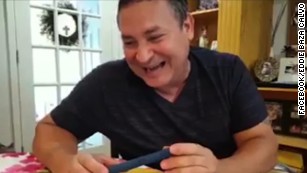
Trump to Guam: We are with you 1000 percent
It's testament to the power that religion holds here, perhaps at the expense of the culture of the island's indigenous Chamorro people, who have been in Guam for about 4,000 years.
"The first missionaries came here in the 1600s and brought the faith to our island," Father Gofigan told CNN. "It's really so rooted, so much so that some of our own culture has disappeared and been taken over by the faith."
Don't worry
At Sunday mass, Father Gofigan gave a special blessing to 18-year-old Leonard Calvo, an active participant in the church who's headed off soon for his first year at the University of Notre Dame, a Catholic college in Indiana. He's also the nephew of Guam governor Eddie Baza Calvo.
Leonard's faith played a role in choosing his college, and it plays a role in how he views the North Korea-US tensions.
North Korea threatens offshore Guam strike
"It's not really the first time that we've had this kind of situation," he told CNN.
Routine helps, he says, whether it's going to mass or getting up early in the morning to fish on the beach.
"Keeping calm and having faith, I think that's really important for a crisis like this," said the younger Calvo. "In the words of Bob Marley, everything's going to be alright."
News Courtesy: www.cnn.com

